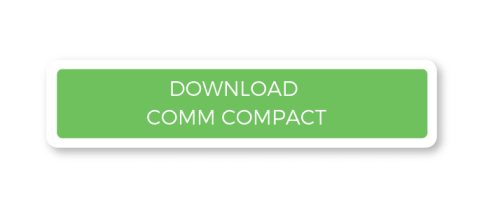Curt Steinhorst: Why Productivity Is Not Personal

I absolutely love Freedom. I consider it an essential app in pursuit of individual productivity.
But here’s an important secret: productivity is not personal.
The self-help section at the bookstore would have you believe otherwise. There’s an entire cottage industry built around the notion that productivity is something you can “hack”, for yourself. The prevailing metaphor is that your brain is just a super-complex computer, and if you just find the right inputs (the right book, the right life-hack, the right listicle on Buzzfeed), you can dramatically increase your output.
This is a problem.
In 2018, we ran a survey addressing approaches to team productivity. We’ll talk more about it at the end of this article, but here’s a quick preview of what we found: our cultural obsession with “individual productivity hacks” actually distracts us from approaches that really work. There are two fundamental distractions of this mindset.
The first distraction: a hack-centric view leads to advice that distorts the true meaning of focus and productivity.
Here’s what I mean. This morning I was laser-focused on clearing out my inbox. Twenty minutes later, my inbox was empty. And, perhaps unsurprisingly, not one single email pertained to any important project my team is currently working on.
“Inbox Zero” is a well-known, individual productivity hack. But in this case, was that 20 minutes a representation of focus, or distraction?
Answer: both.
We need to redefine “productivity”
You can be totally focused AND completely distracted—at the same time! Because while “focus” is an attentional activity, a resource we can use in a variety of situations, “distraction” only has a definition in situations where there is something more important to be done. Distraction, then, is actually confusion about what matters.
Point is, we can’t simply hack our way to better focus. As in the email example above, by equating machine efficiency with productivity, we ultimately give equal credit to all tasks, and end up even more distracted—sometimes by the very items on our to-do list!
Productivity, then, isn’t simply about accomplishing more. It’s about accomplishing what’s most important: to you, your team, and the communities you align yourself with. And to define what’s most important, we have to work together.
This leads us to the second distraction of “hack-centric” productivity: it ignores the network effect of attentional choices.
Human attention (and productivity) is a network effect
Human attention is inextricably linked to available time, bounded by the space we occupy, and—most importantly—guided by the communities we identify with.
At work, that network is our team. And our teams are more interconnected than ever—91% of organizations assign employees to projects outside their functional area. This level of inter-connectedness requires solutions that help us become inter-productive.
Otherwise, we risk entangling our teams in the drawbacks of networked distraction. Technology doesn’t distract us nearly as much as we distract each other.
In that sense, this is the intersection we need to work toward: a refined view of what it means to be productive, shaped by and communicated with the vital network that is our team. These are the beginnings of what we call an Attention Alliance.
Toward an Attention Alliance on your team
Working together toward what’s most important is easiest when we create alignment on the challenges and limitations of our individual attention.
- How do we set up and manage our shared spaces (both physical and virtual)?
- What’s the best way to set and communicate priorities with each other?
- When are we allowed to say “I need some uninterrupted time for this work”?
- How should team members manage their communication channels?
Answering questions like these, together with our teams, is the core concept of building an Attention Alliance. Today we are going to start with that last question, and will address the rest in future posts.
The first step: a Communication Compact
Let’s talk more about that survey I mentioned earlier. We surveyed a variety of different members of teams at organizations across the country. When explicitly asked what prevents focus in their workday, 70% said their team needs more “hacks”, more strategies for better productivity.
But then we asked them to identify what’s already working; essentially, to indicate what actually makes noticeable improvements in team focus.
Surprise: fewer than a third of respondents point at those “productivity hacks”. Instead, a wide majority indicated communication strategies—setting better expectations, improving meetings, and reinforcing feedback loops between leadership and staff.
There’s a disconnect here. We think we need more hacks, but productivity improvements actually start with better team communication—especially related to expectations and goals.
We’ve seen this over and over again working with companies of all sizes, and our survey reinforced it. In addition, it reiterated that there is no “one size fits all” approach to that communication.
Within the survey, the communication recommendations varied widely. For some teams, “more effective meetings” meant more meetings led by rotating team members, while for others it actually meant fewer meetings. Same with feedback loops and training: the specifics of our needs vary from industry to industry.
The underlying need, though, is always the same: we need to communicate better about how we communicate.
That’s why we developed the Communication Compact. It attempts to give us a framework to start the right kinds of conversations on our teams, to help set better expectations for the actual work we’re trying to accomplish, and (crucially) the channels and boundaries that surround how we communicate about that work.
This is a tool that we’ve used successfully with teams all over the country. If you’d like a copy, we’re now offering our latest version for free—just for readers of the Freedom blog!
More to come
Over the next few months, right here on the Freedom blog, we’re going to dive a little deeper into these concepts. We’ll explore the science of attention, how it interacts with the space we occupy and the time we have, and how we can work together to build a better workplace—one where the important work gets done.
Today’s guest post is written by Curt Steinhorst, best-selling author of “Can I Have Your Attention?”, and founder of Focuswise. He travels the globe working with organizations to reduce distraction and improve communication—to help put the “work” back in the workplace.




